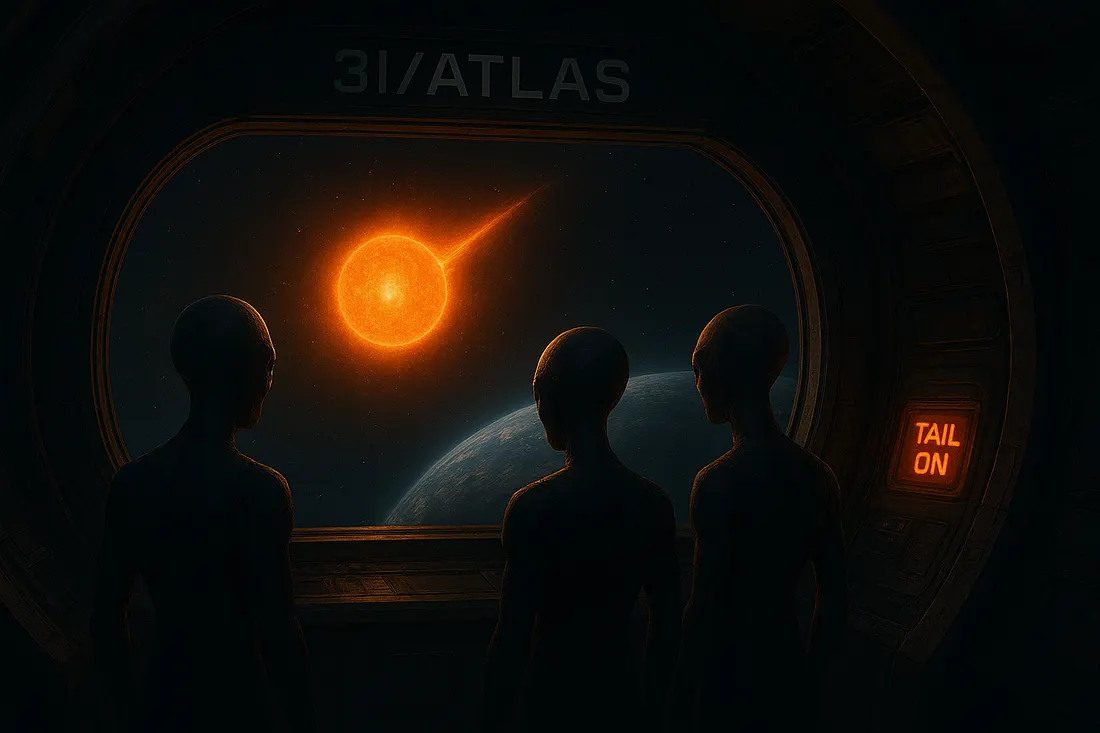The United Nations-endorsed International Asteroid Warning Network (IAWN) has officially announced a new campaign to monitor the interstellar object 3I/ATLAS, marking a first for the global planetary defense community. This campaign aims to gather critical observations of the unusual object, which has drawn attention for its rare characteristics and potential implications for science and planetary safety.
IAWN is a collaboration of international astronomers and research organizations dedicated to detecting, tracking, and studying Near-Earth Objects (NEOs) and potentially hazardous asteroids. While previous campaigns have focused on asteroids that could collide with Earth, 3I/ATLAS represents the first interstellar object targeted in such an initiative.
According to the Minor Planet Center, the campaign will run from November 27, 2025, through January 27, 2026, with a preparatory workshop scheduled to teach astronomers advanced astrometry techniques specifically for cometary and interstellar observations. “Comets present unique challenges for accurate astrometric measurements and orbit predictions,” the announcement notes. “Their comae and tails can distort centroid measurements, complicating the calculation of precise trajectories.” Only participants who attend the workshop will be eligible to contribute to the campaign. Registration closes on November 7, 2025.
The campaign follows a White Paper submitted to the United Nations on September 30, 2025, co-authored by Harvard astrophysicist Avi Loeb, Omer Eldadi, and Gershon Tenenbaum. The paper urged the global scientific community to coordinate monitoring of interstellar objects like 3I/ATLAS, highlighting that even low-probability “black swan” events could have profound implications for humanity, especially if such objects harbor advanced technologies.
Loeb notes that 3I/ATLAS exhibits several unusual features, earning it a 4 out of 10 on the “Loeb scale” for potential technological origin. These include:
- Ecliptic Alignment – Its trajectory is aligned within 5 degrees of the planets’ orbital plane around the Sun, an occurrence with a 0.2% likelihood.
- Sunward Jet – During July and August 2025, the object displayed an anti-tail not explained by geometric optical effects.
- Massive Nucleus – Its nucleus is millions of times more massive than 1I/‘Oumuamua and far denser than 2I/Borisov, while moving faster than both, a highly improbable combination.
- Precise Arrival Timing – Its approach was fine-tuned to pass near Mars, Venus, and Jupiter, remaining mostly unobservable from Earth at perihelion.
- Nickel-Rich Gas Plume – Its surrounding gas contains unusually high nickel levels relative to iron, unlike any known comet.
- Low Water Content – Only 4% of its mass is water, in contrast to typical comet compositions.
- Extreme Polarization – It displays unprecedented negative polarization compared to known comets.
- Wow! Signal Alignment – The object arrived from a direction within 9 degrees of the famous 1977 Wow! Radio Signal.
Loeb points out that the combination of these factors makes the probability of natural occurrence extraordinarily low—less than one in ten quadrillion—justifying intensive observational campaigns from Earth and space-based telescopes.
Currently, no spacecraft is positioned to intercept 3I/ATLAS directly, though prior calculations suggested that NASA’s Juno spacecraft could have intercepted the object near Jupiter in March 2026 if fuel constraints were addressed. Meanwhile, researchers are watching for potential technological signatures, such as the release of mini-probes near the object’s perihelion on October 29, 2025, which could take advantage of the Sun’s gravitational boost.
3I/ATLAS will make its closest approach to Earth on December 19, 2025, offering a unique window for study. Loeb and the Galileo Project team hope that by Christmas, scientists will have a clearer understanding of this interstellar visitor, potentially revealing unprecedented insights into objects arriving from beyond our solar system.
About the Author
Avi Loeb is the director of the Galileo Project and the Institute for Theory and Computation at the Harvard-Smithsonian Center for Astrophysics. Formerly chair of Harvard’s astronomy department, he has authored bestselling books on extraterrestrial life and continues to advocate for global scientific collaboration in studying interstellar objects.

